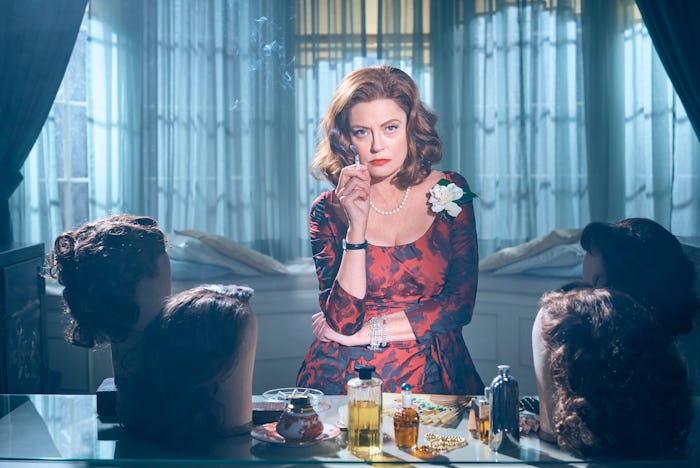Entertainment

Bette Davis Kept Her Youngest Daughter Out Of The Spotlight
Margot was adopted by the actress and her fourth husband Gary Merrill shortly after she was born.
Bette Davis was the mother to three children — eldest daughter, B.D., son, Michael, and youngest daughter, Margot. People may not know about her personal life or relationships with her kids, which is why some people might be surprised to learn that Margot didn't live with her, and instead spent her childhood in institutions where she could receive care that the actress could not provide herself. These days, Margot Merrill is now over 70 years old and continues to stay out of the spotlight.
The 2017 FX series Feud: Bette and Joan didn’t delve deeply into her relationships with all her kids. Her eldest daughter B.D. gets the most screen time, and her son Michael hasn't appeared at all. However, her youngest daughter Margot did come up briefly when Davis, portrayed by Susan Sarandon, explained her family situation to her co-star Joan Crawford, played by Jessica Lange.
Margot Was Bette Davis’ Youngest Child
Margot was adopted by Davis and her fourth husband Gary Merrill shortly after she was born. Though she was a happy baby, by the time she was 3 years old it became clear something was amiss. A trip to the doctor revealed that Margot was suffering from brain damage that must have occurred shortly after her birth. Though the family tried to take care of her themselves at first, Margot was eventually sent to a care facility called the Lochland School in Geneva, New York. That was where she remained for most of her life.
According to the Davis biography Dark Victory by Ed Sikov, Davis once said, "The most difficult day of my life was the day I was dressing Margot, three years old, in a sailor suit and a sailor hat [and told her] about the lovely school she was going to."
Margot Didn’t Live With Her Mom For Periods Of Time
Though Margot was moved around throughout her life and had many visits home, she did not live with her mother again for any significant length of time. Davis wanted to bring Margot home once B.D. was married and Michael was away at school, but didn't appear to be able to care for Margot on her own. But in her memoir This 'N That, Davis painted a positive picture of her relationship with her younger daughter.
“Margot is past thirty now. She has come home often, and our times together have been happy. On one of her birthdays, I took her to New York and pulled out all the stops — nightclubs, theaters, the works,” she wrote. “Wherever we went I was asked for my autograph. In the car going back to the hotel, Margot said, 'Mummy, may I have your autograph?' Sometimes you laugh to keep from crying.”
As recounted in Dark Victory,Davis allegedly removed Margot from Lochland in the 1960s and had her placed with several different families in Philadelphia before she finally settled at the Devereaux Foundation home in Santa Barbara. However, Margot was unhappy there and the situation led to an argument between Davis and Merrill, who wanted her returned to Lochland. Davis supposedly said that he could take her there and pay for it if he wanted, which may have later led to Merrill accusing Davis of abandoning Margot, as reported in the book Bette and Joan: The Divine Feud by Shaun Considine.
Where Is Margot Now?
As recalled in Dark Victory, “Gary Merrill paid for Margot's care [at Lochland] until his death in 1990,” Sikov wrote. He added that Merrill set up a trust to provide for her afterwards which was managed by her brother Michael. Davis did not include Margot or her older daughter B.D. in her will. Davis' reasons for doing so aren't clear, but Margot appears to have been well taken care of regardless. At the time of Dark Victory's publication in 2008, Margot was still living at Lochland. Her current situation is unclear, but it seems fair to assume that she, now more than 70 years old, continues to reside there.
This article was originally published on